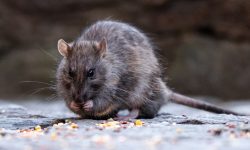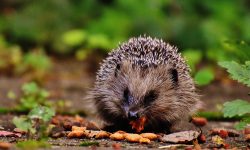Otters are among the most skilled and playful predators found in rivers, lakes, and coastal habitats worldwide. Their diet is surprisingly diverse, shaped by the environments they explore and the prey available beneath the water’s surface. With quick reflexes and strong aquatic instincts, otters thrive on foods that fuel their active, curious lifestyle.
In the wild, otters spend a large portion of their day searching for meals that provide energy and hydration. Their sharp teeth, sensitive whiskers, and streamlined bodies allow them to hunt efficiently both above and below the water. Every bite supports their fast metabolism, making a reliable diet essential for survival.
Understanding what otters eat helps reveal how they maintain balance in the ecosystems they inhabit. Below is the most detailed guide to the foods otters rely on most, followed by an in-depth breakdown of the 20 wild foods they consume in rivers, wetlands, and coastal landscapes across the world.
Understanding the Otter Diet

Otters as Opportunistic Carnivores
Otters are strict carnivores, relying almost entirely on animal-based foods for nutrition. Their bodies are adapted for fast-paced hunting, requiring a high-protein diet that supports quick movements and long swimming sessions. Because of their rapid metabolism, otters must eat frequently to stay warm and energized.
Habitat Shapes What They Eat
Depending on whether they live in freshwater or coastal habitats, otters adapt their diet to the prey available. River otters prioritize fish, crustaceans, and amphibians, while sea otters focus heavily on marine invertebrates like clams, crabs, and urchins. Their ability to switch between prey types makes them incredibly resilient in changing environments.
The Role of Hydration and High Energy
Since otters burn calories quickly, they prefer foods rich in moisture, protein, and fats. This combination keeps them hydrated while maintaining body temperature in cold water. Their feeding habits help regulate prey populations and maintain ecological balance.
20 Wild Foods Otters Rely on Most
1. Fish
Fish make up the majority of a wild otter’s diet. Species like trout, perch, catfish, and salmon are favorites due to their abundance and high protein content.
Otters use their whiskers to detect vibrations in the water, allowing them to track fish even in murky conditions. Their fast swimming and agile diving give them a major advantage.
A single fish can provide a quick burst of energy that supports their constant movement throughout the day.
2. Crabs
Crabs are a favorite food for many coastal and sea otters. Their hard shells contain nutrient-rich meat packed with fat and minerals.
Otters use rocks as tools to crack open crab shells, showcasing impressive intelligence and dexterity. This behavior is especially common among sea otters.
Crab meat provides long-lasting energy, crucial for maintaining body heat in cold ocean waters.
3. Clams
Clams and other bivalves are essential foods for sea otters. Their dense flesh provides protein and moisture, supporting hydration and strength.
Otters dive to the seafloor, retrieving clams before floating on their backs to open them with rocks. This unique feeding method sets them apart from most marine mammals.
Clam-rich diets help otters survive in regions where fish are less abundant.
4. Mussels
Mussels attach tightly to rocks, making them a challenging but rewarding prey. Otters pry them free with their paws or teeth.
The soft interior of mussels is easy for otters to digest, offering a quick source of protein and fats. Mussels are particularly valuable when tides bring fresh clusters to shore.
Their abundance in coastal environments makes them a consistent year-round food.
5. Sea Urchins
Sea urchins are a well-known delicacy for sea otters. Despite their sharp spines, otters handle them with ease.
Sea urchin roe is rich in fats and calories, making it one of the most energy-dense foods otters consume. This high-energy meal supports their warm-blooded metabolism.
By eating urchins, otters help protect kelp forests from overgrazing, maintaining critical marine habitats.
6. Frogs
Freshwater otters often hunt frogs near the edges of ponds and wetlands. Frogs offer a balance of protein and moisture.
Otters catch them quickly with precise movements, often surprising them from underwater. Frog populations boom during summer, giving otters easy seasonal meals.
These amphibians help sustain otters when fish availability fluctuates.
7. Tadpoles
Tadpoles are easy prey thanks to their slow movement and clustering behavior. Otters scoop them up in shallow waters.
Tadpoles provide hydration and soft, easily digestible nutrients. They serve as a valuable food source for young otters developing hunting skills.
During breeding season, tadpoles become one of the most abundant foods in wetland habitats.
8. Snails
Snails offer trace minerals and moisture that support digestion. Freshwater otters consume both the soft body and small shells.
Their slow movement makes snails ideal for inexperienced otters learning to forage. Snail-rich environments provide steady meals throughout the year.
These small prey items support healthy teeth and jaw development.
9. Worms
Earthworms appear near riverbanks after rainfall, giving otters an easy protein boost. Worms are soft, nutrient-rich, and hydrating.
Otters forage for worms during their land excursions, especially when traveling between water bodies. This behavior helps diversify their diet.
Worms provide important amino acids that help sustain daily activity.
10. Crayfish
Crayfish are a staple food for river otters. Their hard shells hide juicy meat that otters expertly extract.
Otters catch crayfish by feeling under rocks or digging through muddy riverbeds. Crayfish-rich rivers support robust otter populations.
This prey offers a perfect balance of protein, fats, and minerals.
11. Shrimp
Shrimp are popular among coastal otters. Their soft bodies are easy to digest, and they swim in predictable patterns.
Otters chase shrimp through shallow waters, often catching multiple in a single dive. Shrimp provide hydration and energy without requiring shell-cracking effort.
Abundant shrimp populations keep otter feeding efficient and fast.
12. Small Fish Fry
Young fish are easier to capture than adults. Otters often feed on fish fry during seasonal hatches.
These tiny fish provide hydration and quick protein for otters on the move. Shallow nursery habitats make hunting effortless.
Fish fry supplement meals when larger fish are scarce.
13. Small Birds
Occasionally, otters catch waterbirds such as ducklings. These meals are rare but nutrient-dense.
Otters ambush young birds that come too close to the water’s edge. Bird meat offers fats that help regulate body temperature.
Such prey is more common in dense marshlands.
14. Bird Eggs
Otters raid nests near riverbanks or coastal cliffs for eggs. Eggs offer a high-calorie meal with minimal effort.
Otters consume both yolk and shell fragments, gaining calcium and fats. Egg availability peaks during bird breeding seasons.
This opportunistic feeding provides valuable variety.
15. Insects
Otters consume aquatic insects like dragonfly larvae and beetles, especially in freshwater ecosystems.
These insects cluster in shallow waters, making them easy targets. Their soft bodies supply trace nutrients and moisture.
Insect diets help support juvenile otters with small appetites.
16. Eels
Eels offer dense, fatty meat ideal for long-lasting energy. Otters chase them through muddy waters with remarkable skill.
Their slippery texture makes them challenging prey, but otters use their teeth and agility to secure them. Eel hunting is common in river and estuary systems.
This food helps otters maintain endurance during winter months.
17. Amphibian Larvae
Salamander and newt larvae are small but nutritious prey for otters exploring wet forests.
These larvae live in clusters, allowing otters to catch multiple individuals quickly. Their moisture-rich bodies help keep otters hydrated.
During breeding seasons, amphibian larvae become abundant in streams and ponds.
18. Lizards
On land, otters sometimes catch small reptiles near riverbanks. Lizards offer lean protein and quick energy.
They are most often taken by young otters learning to diversify their food sources. Lizards supplement freshwater-based meals.
Their availability increases in warm, rocky habitats.
19. Carrion
Otters occasionally scavenge dead fish or marine animals washed ashore. This behavior conserves energy.
Carrion provides nutrients without the need for hunting, especially in winter or after storms. Otters selectively feed on fresh carcasses.
This habit helps clean aquatic ecosystems naturally.
20. Sea Snails
Sea snails are common prey for coastal otters. Their shells protect mineral-rich meat.
Otters crack shells easily using teeth or rocks, making snails a convenient meal. Sea snails flourish in tide pools, giving otters easy access.
These small prey items offer dietary variety during long foraging sessions.
FAQs About What Otters Eat
Do otters eat mostly fish?
Yes. Fish make up the majority of their diet, especially for freshwater otters.
Do sea otters use tools to eat?
Sea otters famously use rocks to crack open clams, crabs, and urchins.
Do otters drink water?
Most hydration comes from the moisture inside their prey.
Do otters eat fruit or plants?
No. Otters are strict carnivores and rarely consume vegetation.
How often do otters eat?
They eat multiple times per day because of their rapid metabolism.
Do otters eat insects?
Yes, especially aquatic insects and larvae in freshwater habitats.
Can otters eat large animals?
Only occasionally. They mostly target small or slow prey.
Do otters store food?
Sea otters sometimes hold food in loose skin pockets under their arms.
Final Thoughts
Otters survive and thrive by eating a wide range of aquatic and coastal prey. Their ability to adapt to rivers, wetlands, and ocean environments makes them some of the most fascinating predators in nature. By understanding what they eat, we gain a deeper appreciation for how they maintain balance in their ecosystems and why protecting their habitats is essential for their future.






